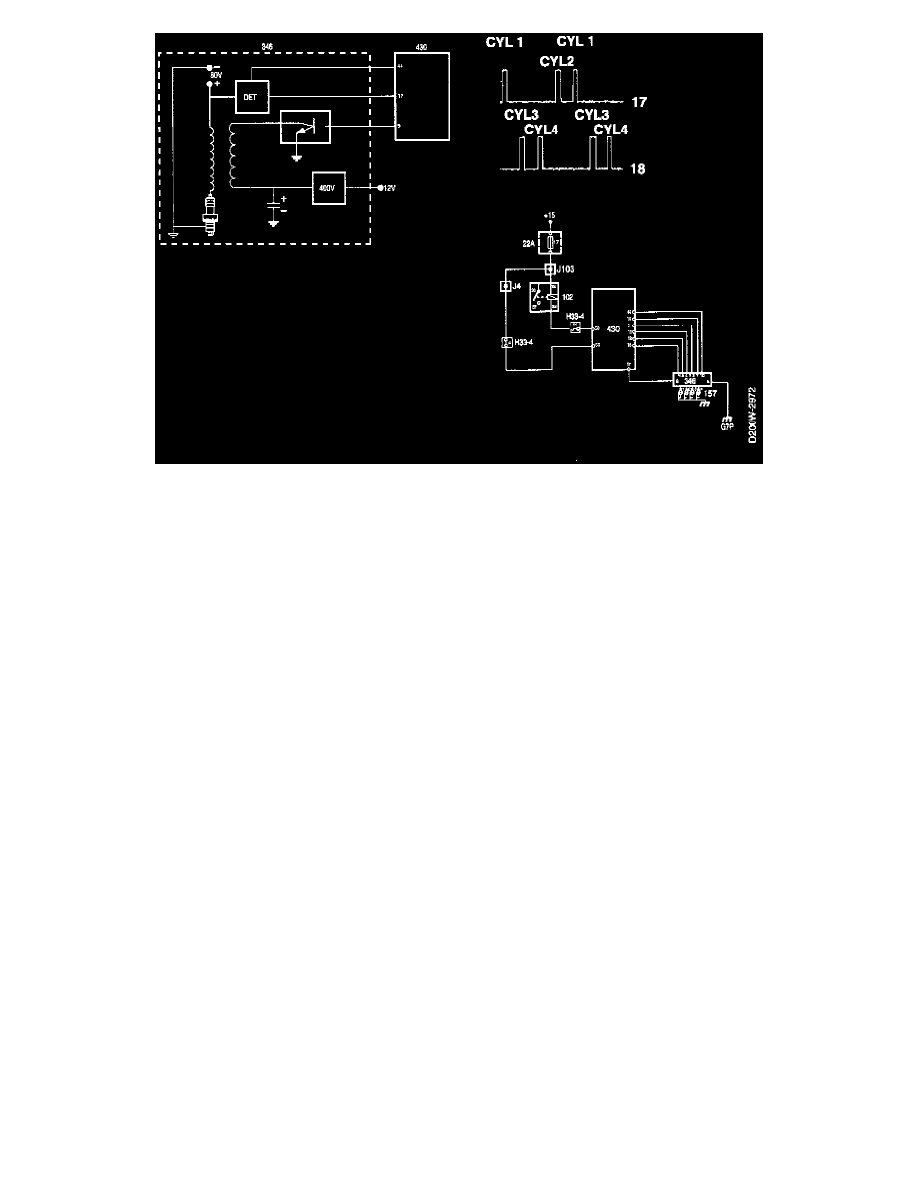900 Turbo Convertible L4-1985cc 2.0L DOHC Turbo EFI (1994)

Combustion Signals
The Trionic system does not have a camshaft sensor. A camshaft sensor is normally required for sequential knock control and fuel injection.
Saab Trionic must decide whether cyl. 1 or cyl. 4 is firing when the crankshaft position sensor indicates that cyl. 1 and cyl. 4 are at top dead center.
This is done as follows:
One pole of the secondary windings of the ignition coils is connected in the usual way to the appropriate spark plug. The other pole is not directly
grounded but is connected to a voltage of 80 V. This means that there is constantly a voltage of 80 V across the spark plug gap except at the
precise moment when the spark is produced.
When combustion takes place, the temperature in the combustion chamber is very high. The gases are ionized and start to conduct current. This
means that a current passes across the spark plug gap (without creating a spark).
The ionization current is measured in pairs, cylinders 1+2 and cylinders 3+4. If combustion occurs in cylinder 1 or 2, the ignition discharge
module sends a Batt+ pulse to Trionic ECM pin 17. In the same way, the ignition discharge module sends a Batt+ pulse to the ECM pin 18 if
combustion occurs in cylinders 3 or 4.
If the crankshaft position sensor indicates that cylinder 1 and cylinder 4 are at top dead center and a Batt+ pulse arrives on ECM pin 17 at the same
time, the ECM knows that it is cylinder 1 that has fired.
When the engine is started, the ECM does not know which of cylinders 1 and 4 is in the compression position, and ignition consequently takes
place on both cylinders 1 and 4 simultaneously. In the same way ignition takes place on cylinders 2 and 3. As soon as combustion signals arrive on
pins 17 and 18 of the ECM, both ignition and fuel injection are synchronized to the engine firing order.
If there is an open circuit on leads wires to pins 17 and 18 of the ECM, no synchronization of ignition or fuel injection occurs, and knock control
will take place in parallel on cylinders 1+4 and 2+3. This does not have any noticeable effect on the operation of the system.
